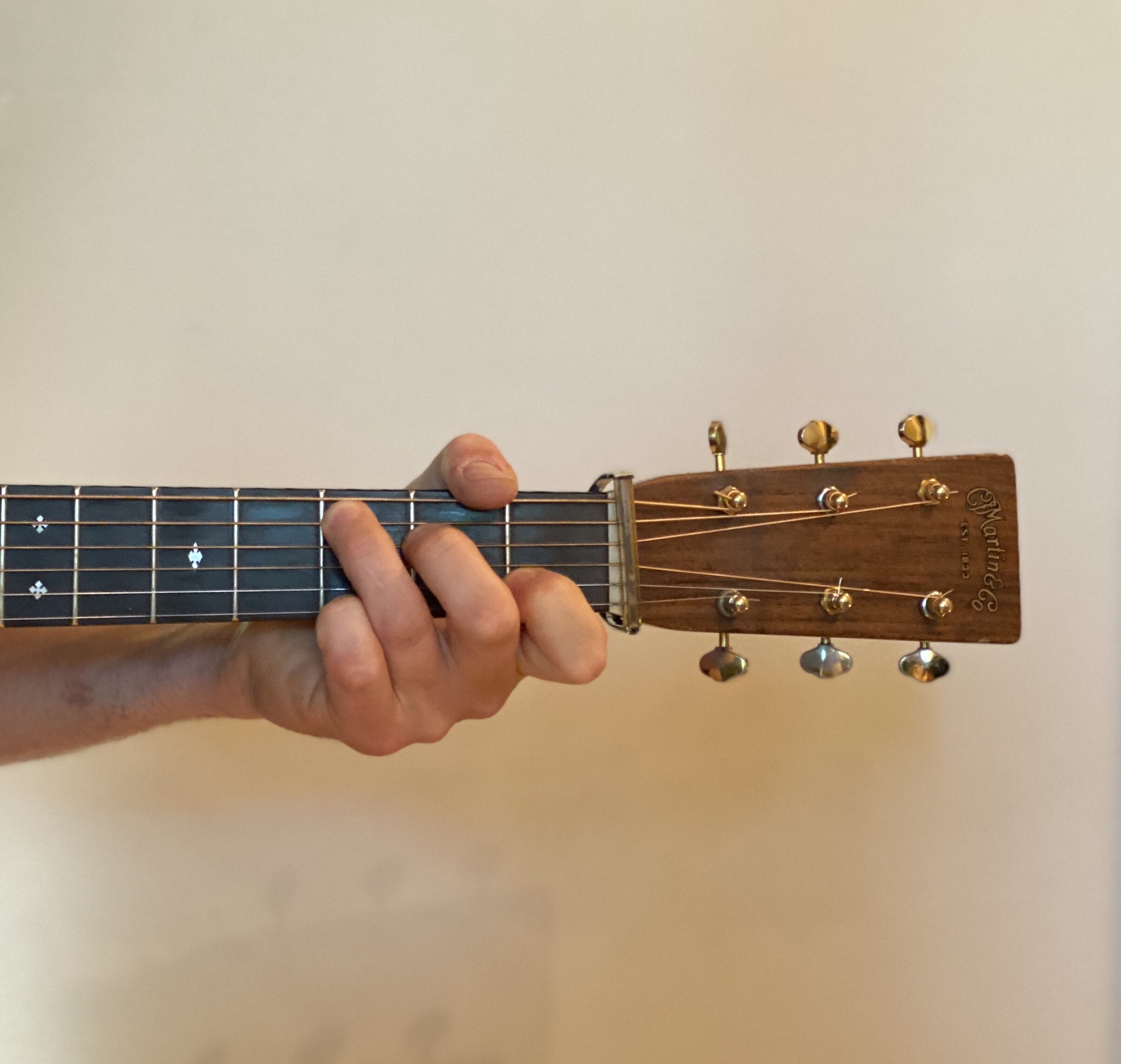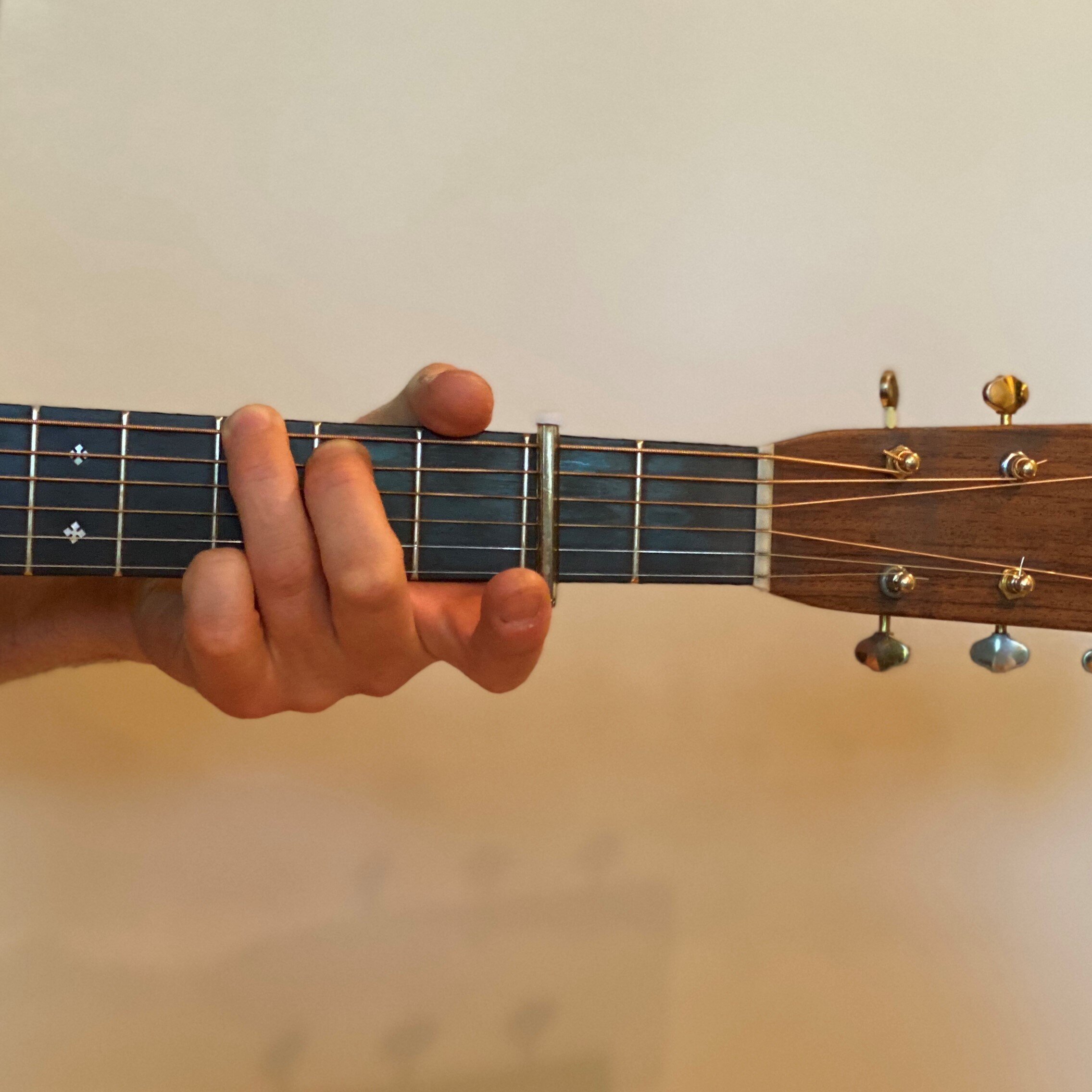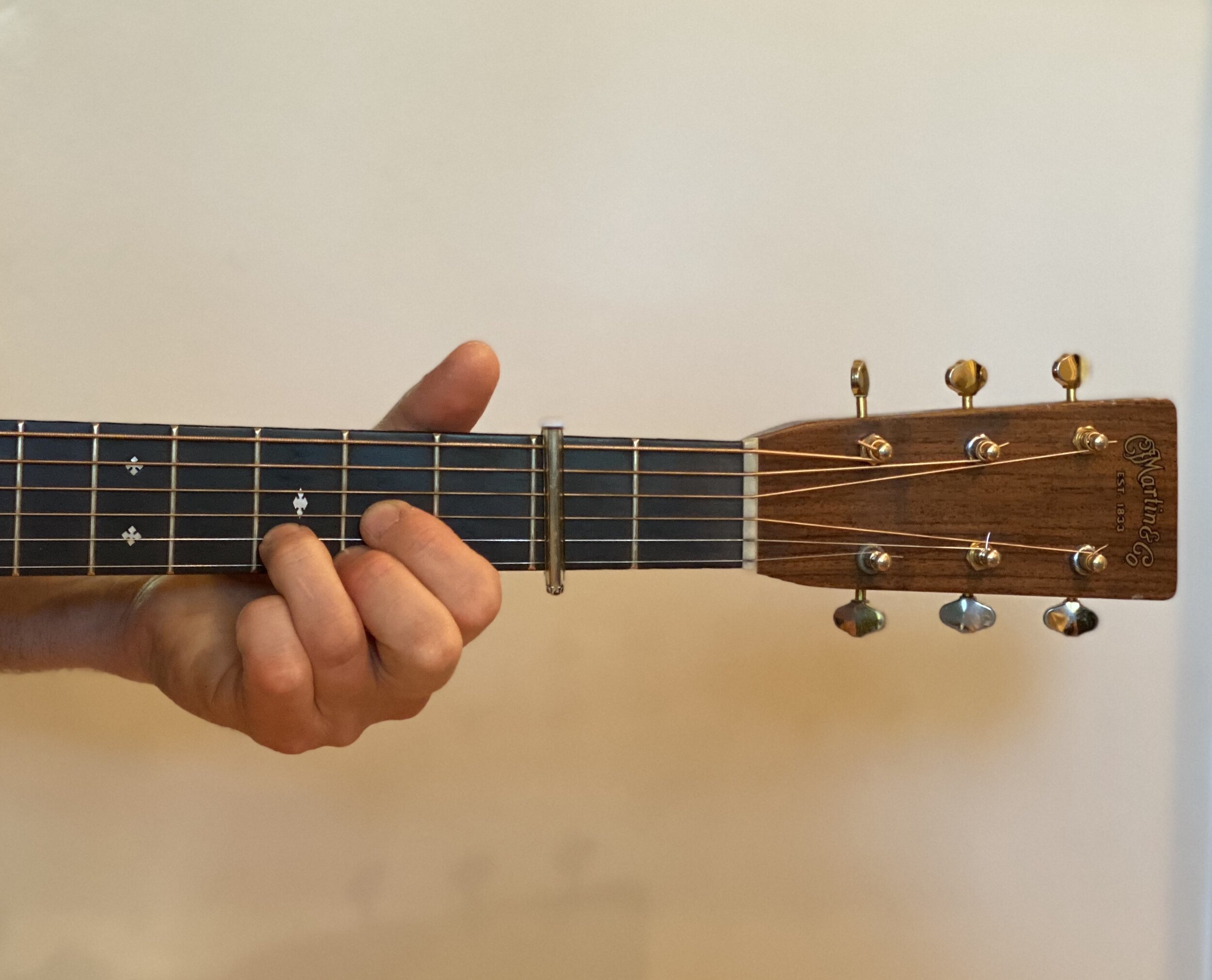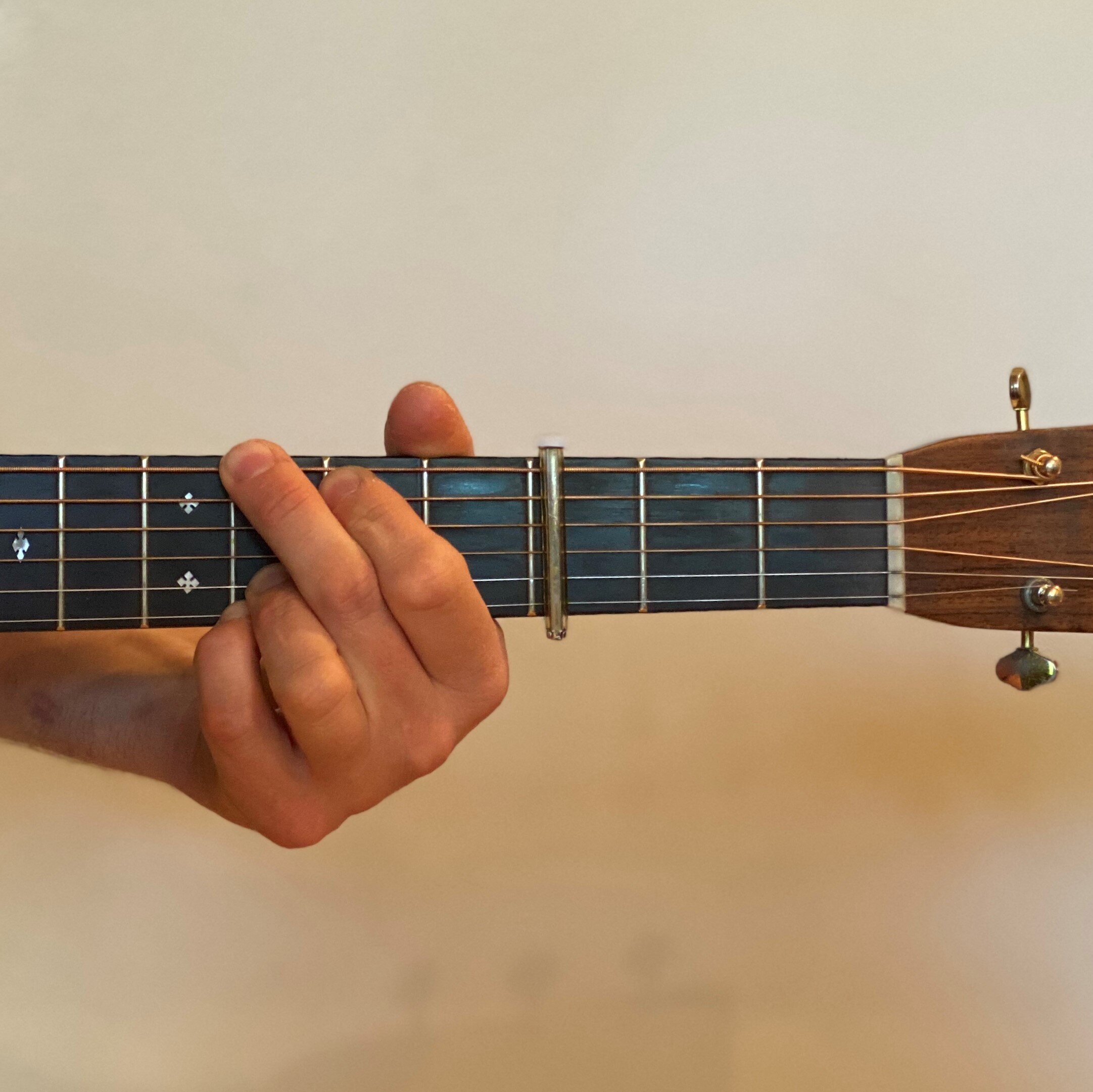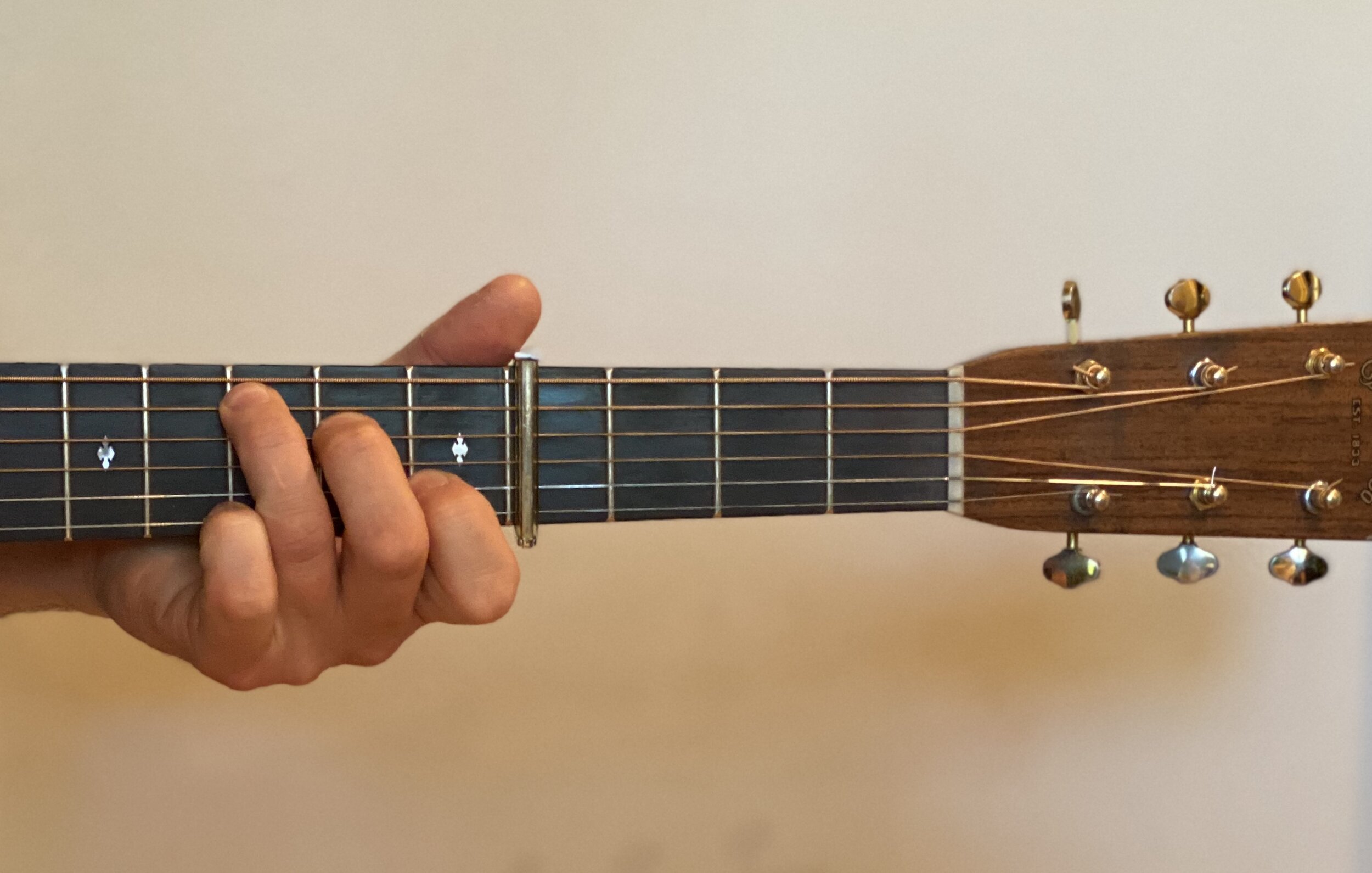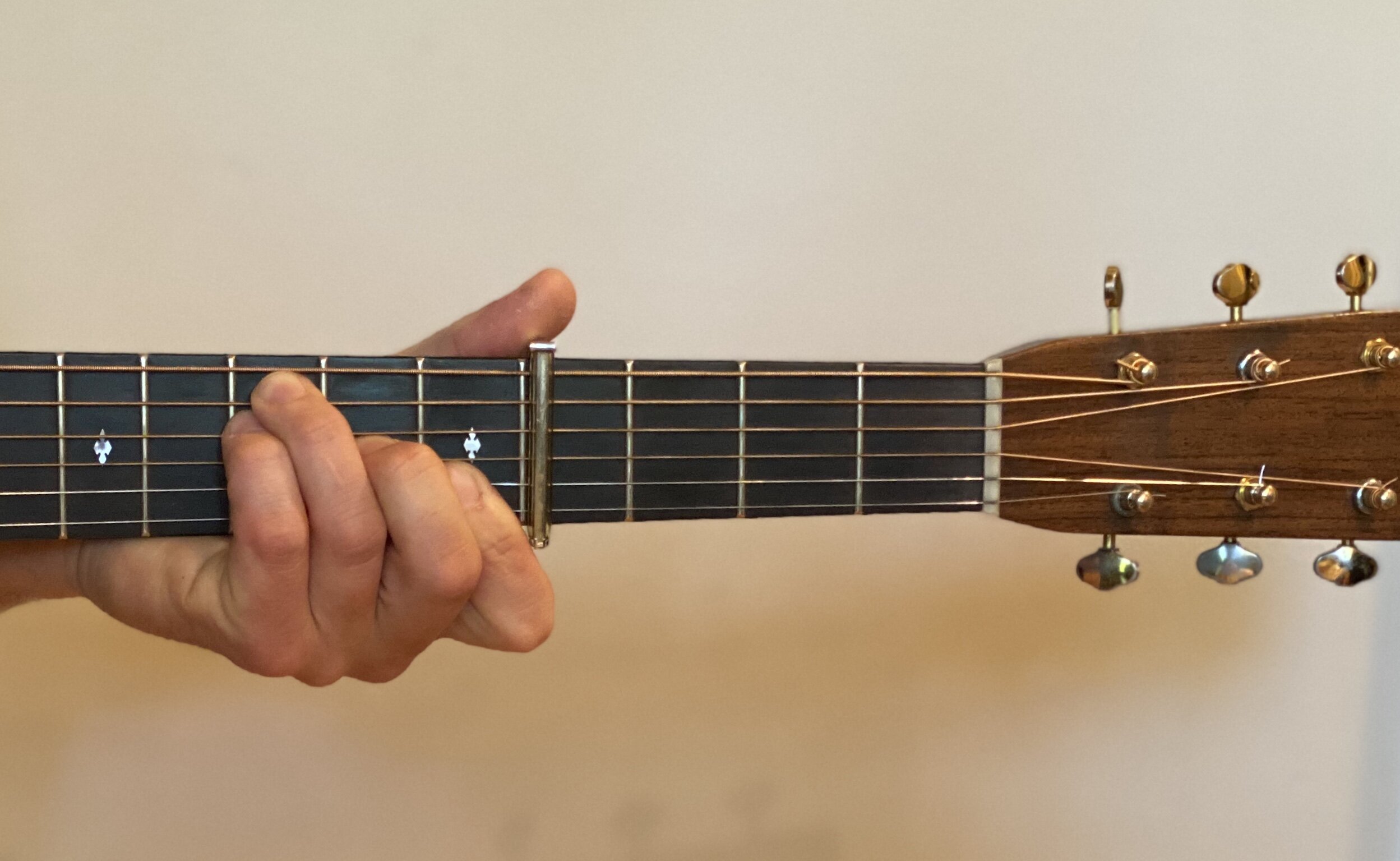Chord Shapes and Capos: How To Decode a Guitarist’s Hands
The last blog post I wrote gave suggestions on how to figure out the key you’re in by using your ear and a little theory knowledge. This post is a guide to a common tool/tip/hack: watching the guitarist’s hands and understanding their chord shapes. Of course, you want to use this skill as a confirmation to what you’re hearing, and not rely on it completely. Why? Because what happens if the guitarist doesn’t know the chords? You’ll want to use these shapes and fingerboard knowledge in tandem with your own growing skill set of hearing and understanding chord progressions.
As a quick reminder, westernized music is based on three chords: the one, the four and the five. We find these chords by understanding that they are built on the first, fourth and fifth notes of the scale/key the tune or song happens to be in. If you’d like a refresher on how to build a scale, you can download my ever-so-popular Major Scale Workbook.
If you want to review the function of these three chords, you can read this post:
Okay! Now for the actual matter at hand:
Guitar players (and banjo players, too) often learn how to play a one, a four, and a five chord in two keys, and then use their capos to transpose the chords to a different key.
Here’s how to start unlocking this great wisdom.
In the key of G, the one chord is based on the first note of the G scale, which is G.
Here’s what a G chord on the guitar looks like:
Depending on the player’s preference, here’s another way to finger the exact same chord.
You’ll want to see the ‘shape’ of the chord and recognize it as G, or in this case, ‘one’.
In the key of G, the four chord is based on the fourth note of the G scale, which is C.
Here’s a C chord:
In the key of G, the five chord is based on the fifth note of the G scale, which is D.
Here’s a D chord:
As I mentioned earlier, it will be helpful if you can memorize those three chords as their chord names AND as their number names.
Chances are high that you know a lot of tunes or songs in the key of G. It’s nicknamed ‘the people’s key’ because it is so friendly on most instruments and is usually a nice key for most people to sing in easily.
Here’s a video of a classic Carter Family song with a very clear view of the guitarist’s hands and chord shapes: Bury Me Beneath the Willow in G shape.
See if you can spot the three chords: one, four and five in the key of G. When you’re ready, grab your instrument and play along with Eric.
Once a player is comfortable moving through these three chords, the guitar is easily transposed to different keys by using the capo. The capo squeezes the strings at a fret tightly enough that it alters the pitch of the instrument’s original tuning. Depending on what fret the musician places the capo determines what pitches the open strings will now produce.
Each fret on an instrument is a half step. If a musician placed a capo on the first fret of the guitar and played the same three chord shapes of G, C and D, the notes the instrument produces would be one half step higher. So even though it feels like the guitarist is playing G, C and D, we’re actually hearing G#, C# and D# (alternatively known as Ab, Db and Eb). This isn’t a super common key, so I didn’t find a great example video with a clear view of the guitarist’s hands.
But let’s practice this idea with the capo on the second fret, an incredibly popular place to put the capo. The second fret means two half steps. Remember, we originally started in G. Two half steps above would be G# and then A. With the capo on the second fret, our G, C and D chords now sound like A, D and E (the one, four and five of the key of A!) Here are pictures to help you:
These two versions of the G chord with the capo on the second fret now sound like an A chord. Still the one chord.
This C chord with the capo on the second fret sounds like a D chord. Still the four chord.
This D chord with the capo on the second fret sounds like an E chord. Still the five chord.
You can practice recognizing these three chords at capo 2 with this video of “Nine Pound Hammer”. Play along with Chris Eldridge in the key of A.
Here’s another chance to practice G/capo 2: Ricky Skaggs and Kentucky Thunder perform Blue Night in the key of A.
When we move the capo to the third fret, we move up three half steps from G. That would be G# (aka Ab), A, Bb. Now the G, C and D chords will sound like Bb, Eb and F. Here are pictures of these chords.
These two versions of the G chord with the capo on the third fret now sound like a Bb chord. Still the one chord.
This C chord with the capo on the third fret sounds like an Eb chord. Still the four chord.
This D chord with the capo on the third fret sounds like an F chord. Still the five chord.
This video of Dailey and Vincent performing Bury Me Beneath the Willow in G shape/Capo 3 will help you practice in the key of Bb. Hopefully you’ll see and hear the similarities between the two Bury Me Beneath the Willow videos: the chord shapes and chord progression is exactly the same - it’s the capo placement that changes the key from G to Bb.
The capo on the fourth fret moves the pitch up four half steps. From our original G chord, that would be G#/Ab, A, Bb, B. Our G, C and D chords now sound like B, E and F#.
These two versions of the G chord with the capo on the fourth fret now sound like a B chord. Still the one chord
This C chord with the capo on the fourth fret sounds like an E chord. Still the four chord.
This D chord with the capo on the fourth fret sounds like an F# chord. Still the five chord.
You can play in B with Michael Cleveland and Flame Keeper as they play Blue Night. You’ll see the guitarist use the second version of the G chord. Notice his capo is on the fourth fret.
For more practice in the key of B, try picking with Vince Gill as he and his band play Blue Moon of Kentucky. Again, G shape/capo 4.
Now that you’re getting more comfortable with recognizing chords and understanding how the capo placement changes the pitch/key, let’s use these skills with another common key and hand shape: Key of C/C shape.
Again, we’ll build these chords based on the first, fourth and fifth notes of the scale. The first note of the C scale is C, the fourth note is F, and the fifth note is G. So the one, four and five chords in the key of C are C, F and G. You already recognize the C and G chords from the key of G, so the work here will be learning the F chord and renumbering the G and C chords. Not so bad, right?
Here’s the C chord for you to look at again. This time we’re going to call this chord one, because we’re now in the key of C.
Here’s the new F chord. We’ll call this chord 4.
Here’s the G chord for a reminder. We’ll call the chord the five in this key. (We called it one in the key of G, but since we’re in the key of C, it’s five now).
This Old Time cult favorite song known as Red Rocking Chair or Sugar Babe is performed by Brittany Haas, Kai Welch, and Lauren Rioux (hey, that’s me!). Hot tip: this tune starts on the four chord.
Now let’s practice this new shape with the capo moving the pitch and giving us a new key. When we place the capo on the second fret, we’re moving up two half steps from C. That would be C# and D. So if we play our C, F and G chords with the capo on the second fret, we’ll be in the key of D and hear D, G and A for one, four and five.
This C chord with the capo on the second fret sounds like a D chord. We’re still calling it the one chord because we’re using it as home base.
This F chord with the capo on the second fret sounds like a G chord. Still calling it the four chord.
This G chord with the capo on the second fret sounds like an A chord. Still the five chord.
You can play along to Bury Me Beneath the Willow in C shape/Capo 2 again with this guitar instructional video (starting around 3:22). With the chord shape and capo placement, we’re in the key of D. But you’ll notice the chord progression of one moving to four, back to one and then to five is the same as the other two videos, since it’s still Bury Me Beneath the Willow, regardless of key. This is the beauty of hearing the chord progression in numbers instead of letter names. When the time comes for transposition, you just slide the musical alphabet to the correct number placement. It’s especially easy for guitarists with the use of the capo- they are quite literally sliding their hands and capo up the fretboard.
For full disclosure, I should mention that some guitarists prefer to play in D without a capo- they’ll play a D chord (you learned that back in the key of G, remember?), a G chord, and then an A chord. This would be called D shape. There are a multitude of shapes on the guitar- E shape, Bar chords, DADGAD tuning, etc! That’s cool and all, but for the purpose of this post, we’re sticking to two hand shapes in an effort to not overwhelm you (I probably already did that, didn’t I? Hang in there with me!)
Okay, back to practicing what we know. C shape with the capo on the third fret. If we move up three half steps from C, we’ll find C#, D, Eb (sometimes referred to as D# but we’re going to call it Eb). Our C, F and G chords will now sound like Eb, Ab and Bb.
Here’s what that looks like:
This C chord with the capo on the third fret sounds like Eb. Still the one chord.
This F chord with the capo on the third fret sounds like Ab. Still the four chord.
This G chord with the capo on the third fret sounds like a Bb. Still the five chord.
Play along with Critter in Eb on Church Street Blues. C shape/capo 3.
Alright, last one! Moving the capo to the fourth fret and still playing in C shape. Four half steps up from C would be C#, D, Eb and E. Now our C, F and G chords sound like E, A and B. For your viewing pleasure:
This C chord with the capo on the fourth fret sounds like E. Still the one chord.
This F chord with the capo on the fourth fret sounds like A. Still the four chord.
This G chord with the capo on the fourth fret sounds like B. Still the five chord.
For practice in E, play along with Hot Rize on Nellie Kane. C shape/capo 4.
BTW, this tune has a minor six chord. In the key of C, the six chord is built on the sixth note of the scale, which is A. An Aminor chord shape looks like this:
An Aminor chord shape with the capo on the fourth fret looks like this and sounds like C# minor because 4 half steps up from A would be A#, B, C and then C#.
Phew! You did it! To test your newfound knowledge, here’s your assignment:
Watch this video of Molly Tuttle and Sierra Hull performing Salt Creek. You’ll need to use four (not three!) shapes we’ve discussed here, and transpose with the capo. If you want to write me at [email protected] with your answers, I’ll be super psyched to get mail.
And if you’d like more help with hearing chord progressions and learning tunes to jam, I’ve got a mighty curriculum built to do just that. Stop by www.jamwithlauren.com to view the courses and find one that fits you.
Happy Jamming,
xoLauren



